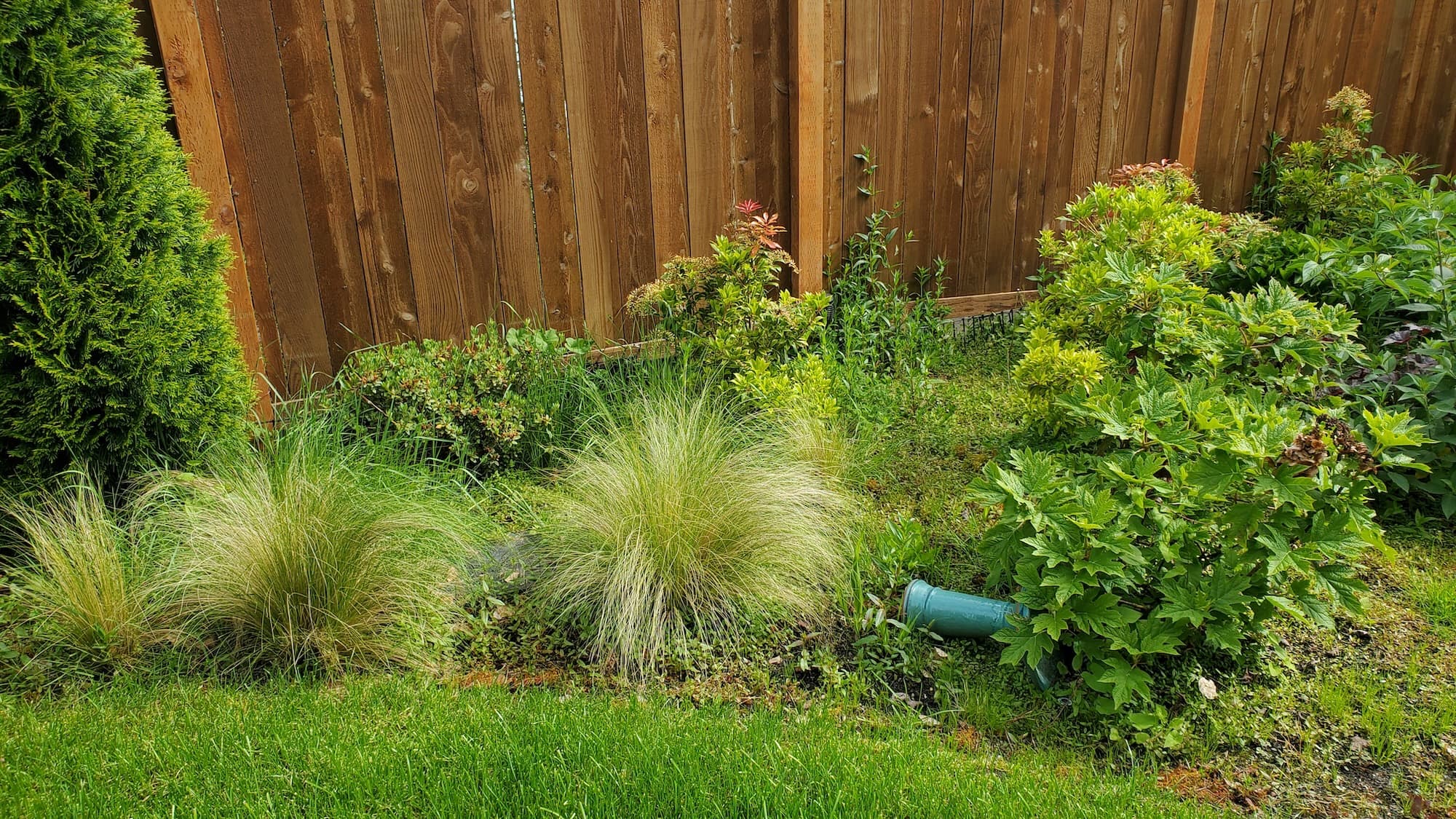Weeding Remove weeds from vegetable beds
Homeowner’s Issue
Weeding yards face a Pacific Northwest set of challenges: heavy winter rain, compacted clay–loam pockets, shaded corners that hold moss, and south- or west-facing beds that dry out quickly in summer. Weeds germinate in the wet season and take advantage of disturbed soil around vegetable beds, while slopes and poor drainage push nutrients away from shallow-rooted crops. Many homes here also sit close to stormwater flow paths and HOA sightline rules, so overgrown beds hurt curb appeal and can violate neighborhood standards.
Typical local weeds — chickweed, ground ivy, willowherb and crabgrass — crowd seedlings and harbor slugs. Clay-rich patches stay wet and compact, making hand-pulling harder and encouraging moss. Conversely, raised beds in sunnier spots can suffer drought stress, letting bindweed and purslane rally. Our approach accounts for seasonal rainfall, slope runoff, sun exposure, and local curb appeal expectations so your vegetables get the space, light, and drainage they need without relying on chemical herbicides.
Our Quality Service
We use hands-on, sustainable methods tuned for Weeding microclimates. We assess sun exposure, soil texture, and drainage lines, then remove weeds by hand and light cultivation to protect vegetable roots. We follow with organic mulch to retain moisture and suppress seedlings, and we contour beds to reduce slope runoff when needed. No herbicides — ever.
Benefits:
- Safer beds for kids, pets, and pollinators.
- Better curb appeal that fits HOA guidelines.
- Lower maintenance long-term with healthier soil and fewer repeat visits.
- Results that hold through Seattle’s wet season and drier summer spells.
What’s Included
- Full site assessment (sun, slope, drainage).
- Manual removal of weeds, roots pulled where accessible.
- Light soil cultivation and edging around beds.
- 2–3” organic mulch application (if requested).
- Haul-away of debris or green-bin disposal option.
Options / Upgrades:
- Landscape fabric under paths or between rows.
- Organic soil amendments and compost.
- Regular tune-ups (monthly / bi-monthly / quarterly).
- Haul-away versus green-bin drop-off.
Before & After / Expectations
Expect some noise from hand tools and a bit of organic debris during work. We’ll need clear access to beds and a short water source for rinsing tools. After service, plant crowns will be visible and beds will look tidy; occasional stray seedlings may appear after heavy rains — that’s normal.
Care tips for Weeding yards:
- Water deeply but infrequently to favor vegetables over shallow-rooted weeds.
- Refresh mulch each spring and after heavy rains.
- Pull small weeds when moist — roots come out cleaner.
- Watch for moss and ivy in shaded spots; address shade and drainage first.
FAQs
- How long does a job take? Most vegetable-bed jobs take 1–3 hours depending on size and weed density.
- Do you use herbicides? No — we use manual and organic methods only.
- Will you handle composting? Yes, we can haul away or leave clippings for your green bin or compost pile.
- Can you work on sloped beds? Yes — we prioritize contouring and mulching to reduce erosion.
Call to Action
Weeding homeowners: book a free estimate with a local pro who understands Seattle rain, slopes, and HOA needs. Fast scheduling, practical results, and sustainable methods. Email neatandtidyseattle@gmail.com to get started — we’ll send a quick photo estimate or come by for a short site visit.










